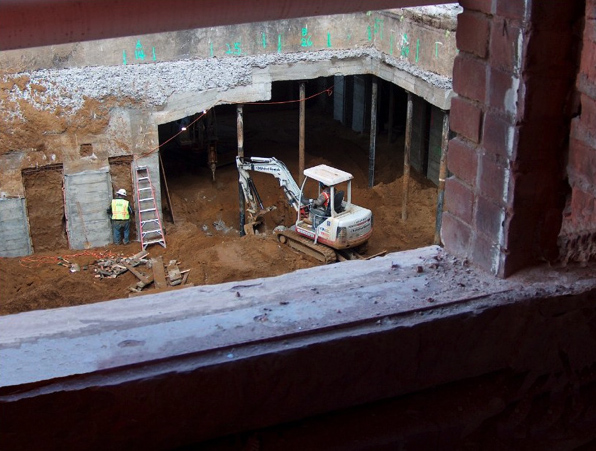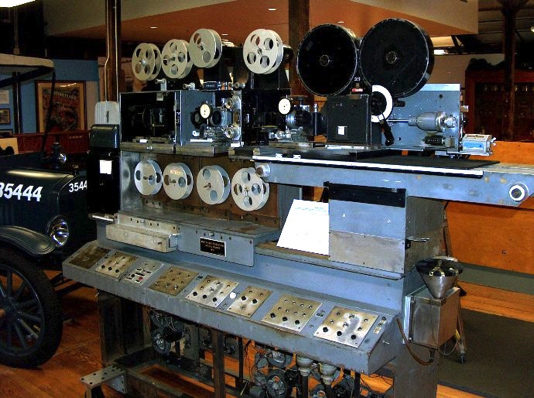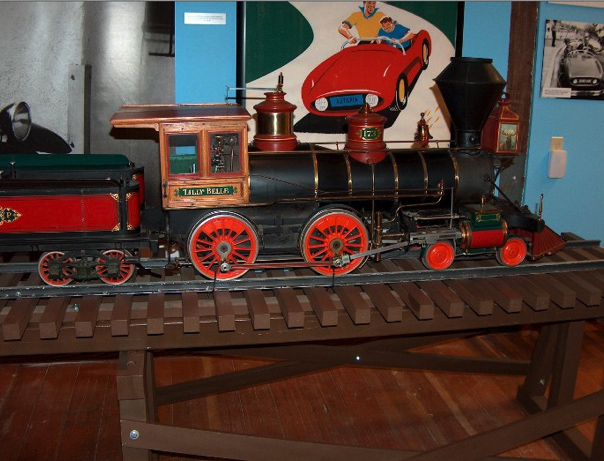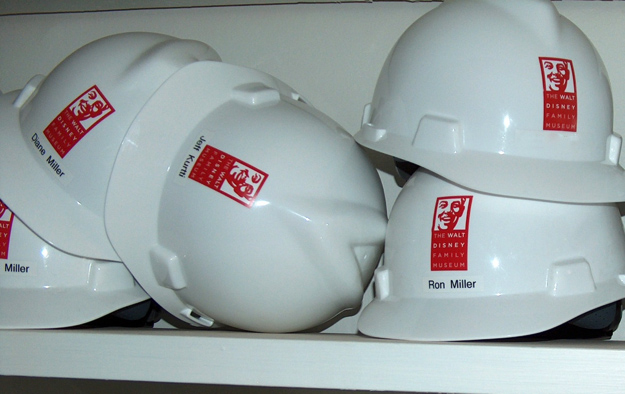In recognition of The Walt Disney Family Museum's anniversary, we'd like to look back and share stories of what it was like to explore The Walt Disney Family Museum while it was being built. Through stories and personal photos, Walt Disney Family Foundation film archivist Scott Zone walks us through Gorgas and the museum's future home.
It was a beautiful San Francisco afternoon, two years before the opening of The Walt Disney Family Museum. I arrived at the Presidio early to visit Diane Disney Miller who had invited me up from Los Angeles for a tour of what many Disney historians have deemed sacred ground. That location in a word: Gorgas.

The "carved out" area, which would be the future location of the "Disneyland and Beyond" gallery.
All images in this post are courtesy of Scott Zone."
What is Gorgas?
Before the amazing Walt Disney artifacts found their perfect home in the galleries of the museum, they lived in a very humble, if not totally secret abode known only as “Gorgas.” Sound familiar? Gorgas was the name of the street that served as the main entrance to the Presidio back then. Along this street is a row of non-descript, beige warehouses. Everything you have come to enjoy among the many galleries of the museum started out here—a warehouse, on a street named Gorgas.
As film archivist for the Walt Disney Family Foundation, my work for the museum began years before the first tractor began moving dirt at its current address in the Presidio. My work took place in a handful of Hollywood post production studios, restoring the many hours of home movies shot by Walt Disney, which are now the movies that screen throughout the galleries of the museum.
Back to the Presidio
Even though I had arrived early that day, I am now terribly late because I can’t figure out which of the bland beige buildings contains the treasures of Walt Disney’s life. At this point, panic has set in and I have foregone the formality of knocking on doors, entering any gateway that is unlocked. Ultimately, this gave me entre to a room full of leotard-clad women chanting “om” under the direction of their yoga instructor. Back to knocking. Two doors down, I knock. The door opens just enough for me to hear, but not see the person on the other side. “I am Scott Zone here to see Diane Miller.” After a short hesitation, the young intern on the other side opens the door and I see that I have arrived… Gorgas, at last! After a warm welcome from Diane I was on my way, exploring the Disney treasures, all laid out in one glorious room.

Mary Poppins
I was seven years old when I first saw Julie Andrews and Dick Van Dyke dancing on screen with those adorable penguins. Years later when I began my career in movies as a special effects cameraman, I learned that such movie trickery was done with a device called an Optical Printer. It was an Optical Printer that allowed Mary Poppins and Bert to jump into the chalk drawing and enter the penguins’ animated world. Among my colleagues, this Disney printer was the Holy Grail, often spoken of in hushed tones. So as I gaze out across the Gorgas treasure trove, the first artifact that catches my eye…. The Walt Disney Studios’ Optical Printer!
A Train In The Distance

Any true Walt Disney enthusiast is no stranger to his beloved backyard railroad, the Carolwood Pacific. I first became aware of it at age nine. I have spent many childhood hours daydreaming of the Lilly Belle steamer that chugged its way through the tunnels and across the trestles of Walt Disney’s miniature railroad. What a thrill it was to see the train, up close and personal at Gorgas. As hard as it was to leave this archivist’s paradise, it was time to move on.
The next stop: the construction site of The Walt Disney Family Museum.

I wish I were wearing my running shoes
Although wearing a hard hat to tour the construction site was a good idea—safety first!—what I really needed was a pair of running shoes. That is what it takes to keep up with Diane as she leads you from room to room of the soon-to-be museum. I am sure Diane must have given this tour to scores of people before me, but given her enthusiasm and boundless energy, it seemed that she, like myself, was seeing all of this for the first time.
As the day wound down, I found I had to catch my breath. The experience was overwhelming, bordering on the surreal. Diane Miller was often asked “Why don’t you write a book about your father?” In the fall of 2009, the bricks and mortar of these army barracks became her answer: “The museum is my book.” Thank you Diane for writing the book that the world will enjoy for generations to come.

Scott Zone
Walt Disney Family Foundation Film Archivist
